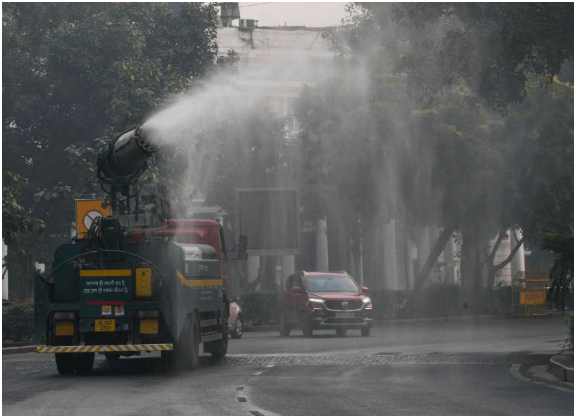
Cloud Seeding: How Artificial Rain Helps Combat High Air Pollution
Cloud seeding is a weather modification technique that involves dispersing certain substances into clouds to encourage precipitation.
This method is often used to increase rainfall in drought-prone areas or to reduce air pollution by triggering rain to wash out airborne pollutants, particularly when the Air Quality Index (AQI) is high.
How Cloud Seeding Works
The process of cloud seeding typically involves introducing particles such as silver iodide, potassium iodide, or sodium chloride (common salt) into the atmosphere. These particles act as “cloud condensation nuclei,” around which water vapor can condense to form droplets. If the conditions are right, these droplets can grow large enough to fall as rain. The method can be carried out using aircraft, drones, or ground-based generators to release the seeding agents directly into clouds.
Substances Used in Cloud Seeding
- Silver Iodide: The most common agent used due to its similar structure to ice crystals. It encourages ice formation, which can lead to rain or snow.
- Sodium Chloride (Salt): Used to encourage the coalescence of smaller water droplets in clouds, aiding the formation of raindrops.
- Potassium Iodide: Another chemical that can act as a cloud condensation nucleus, promoting precipitation.
Purpose and Benefits
Cloud seeding can serve multiple purposes:
- Enhancing Rainfall: This is particularly useful in regions facing water scarcity or during periods of low rainfall. Increasing precipitation can support agriculture, replenish reservoirs, and mitigate drought conditions.
- Improving Air Quality: In urban areas suffering from high pollution levels, rain can help to “wash out” particulate matter and other pollutants from the atmosphere, leading to temporary improvements in air quality.
- Snowfall Increase: In mountainous regions, cloud seeding can increase snowfall, which later contributes to water supply during the warmer months when the snow melts.
Cloud Seeding and Air Quality
In cities with poor air quality due to pollution, cloud seeding can be a tool to reduce airborne particles. High AQI levels, indicating severe pollution, can lead to various health risks such as respiratory issues and cardiovascular problems. By artificially inducing rain, pollutants like particulate matter (PM2.5 and PM10), nitrogen oxides, and sulfur compounds can be washed out of the air, temporarily lowering pollution levels.
Challenges and Criticisms
Despite its potential, cloud seeding is not without challenges:
- Effectiveness: The results of cloud seeding can be unpredictable. It relies heavily on existing atmospheric conditions, and there’s no guarantee that seeding will produce significant rainfall.
- Environmental Concerns: The long-term environmental impacts of using chemicals like silver iodide are not fully understood, leading to debates about their safety. Critics argue that the compounds used could have ecological consequences.
- Ethical and Geopolitical Issues: Weather modification raises ethical questions, particularly when it involves altering natural weather patterns. Additionally, neighboring regions may not benefit from the modified weather, leading to potential geopolitical tensions.
Applications Around the World
Several countries have adopted cloud seeding to manage weather conditions:
- United Arab Emirates: The UAE has been a leader in cloud seeding research, aiming to enhance rainfall in its arid climate. The country has invested heavily in technology and infrastructure for cloud seeding, seeing it as a sustainable way to supplement water resources.
- China: China is known for its extensive cloud seeding efforts, particularly before major events like the Beijing Olympics, to clear pollution and ensure good weather.
- United States: Several states in the western U.S. have used cloud seeding to increase snowfall in mountainous regions, supporting the water supply.
Recent Advances
New techniques are being explored to improve cloud seeding’s efficacy. For example, drones are being tested to deliver seeding agents more precisely. Scientists are also studying the potential of nanotechnology to create more effective seeding particles. Additionally, as understanding of cloud microphysics improves, more targeted cloud seeding strategies are being developed, potentially increasing success rates and reducing unwanted environmental impacts.
In summary, cloud seeding is a promising but complex technology used to manage weather and address issues like water scarcity and pollution. While it has shown some success, ongoing research and careful consideration of its environmental and ethical implications are essential.
For the latest updates-click here.


